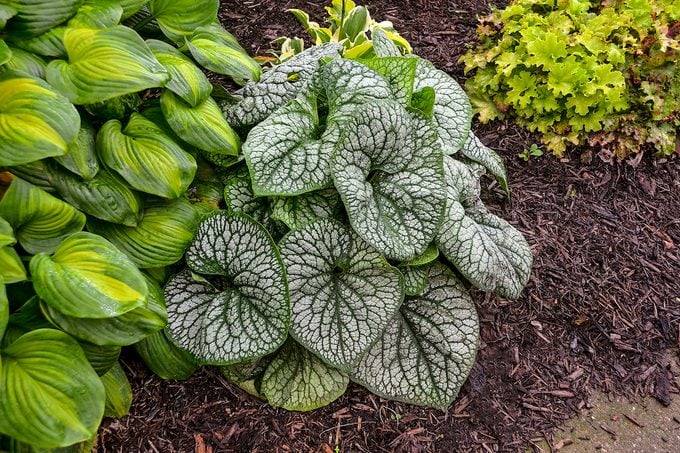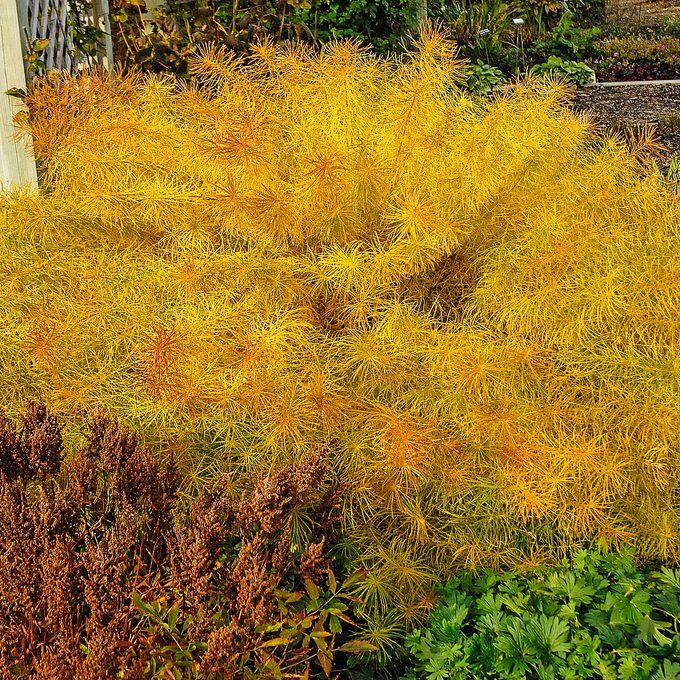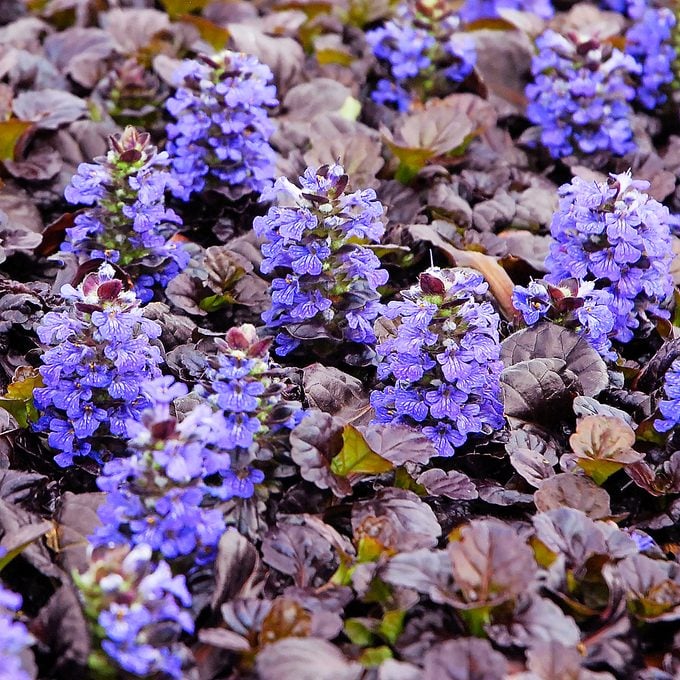Tips for Deer Resistant Plants and Deer Deterrents
Updated: Jul. 26, 2023
Deer may be adorable, but they can seriously damage your garden. Follow this advice to deter deer. Plus, find deer-resistant plants to grow.
Our editors and experts handpick every product we feature. We may earn a commission from your purchases.
Expert Tips to Deer-Proof Your Garden
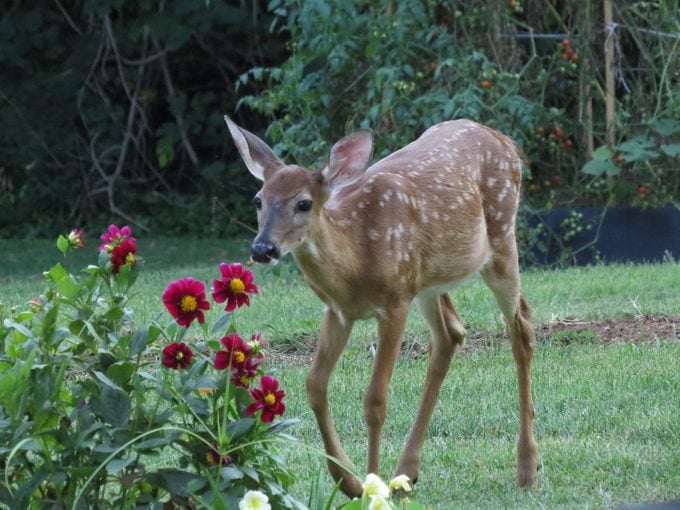
Deer have gone to extremes. They’ve made themselves at home in suburbia and even in towns. Their numbers are up—and so is the level of damage to gardens. Haircut sweepings are no longer effective, because today’s deer are accustomed to the human scent. Even stinky sprays, homemade or commercial, may not work. Hanging wind chimes or foil pie plates in hopes of scaring them away? Bambi and his pals will only laugh. Instead, consult lists of the most deer resistant plants, and avoid or remove plants that attract deer, such as tulips, pansies, hostas, arborvitae and yew. There’s no sense in actively tempting deer to visit your yard!
But don’t be tricked into a false sense of security. “No plant is truly deer-proof,” says Brooke Maslo, an assistant extension specialist in wildlife ecology at Rutgers University. When deer are hungry, especially in fall and winter, any plant in your yard may become dinner. Contact your local extension office for a list of what deer do and don’t find appealing.
Check out the best deer resistant bulbs for spring blooms.
Try Deer Deterrents
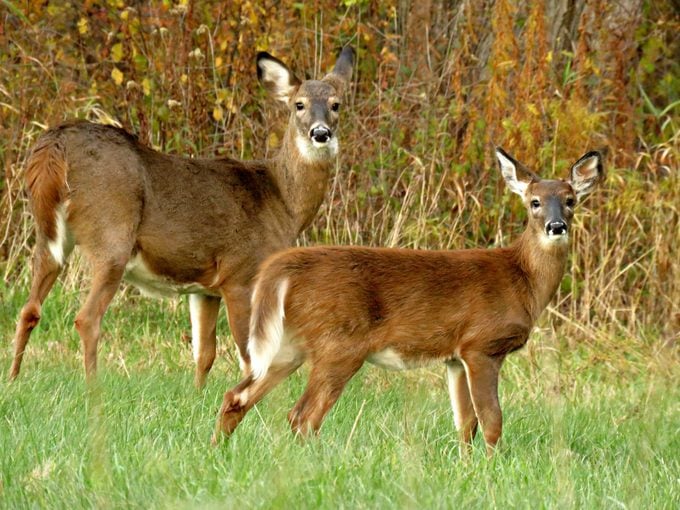
Deterrents are worth a try, and are best used before pests are a problem. At the low end of cost and effort, hang bars of strong-scented soap or use homemade garlic spray. Apply blood meal or deer repellent granules around plants, or spray them with commercial products to make them smell and taste bad. You can also try Plantskydd, a repellent that is resistant to rain and snow.
The measures may also deter rabbits, another common backyard critter. Motion-activated water sprays, lights and other gadgets are worth a try, too.
On the subject of stopping deer from eating sunflowers (while not frightening birds), horticultural expert Melinda Myers had this to say. “Homemade repellents such as hair clippings, unlit votive candles and slivers of highly scented deodorant soaps sometimes work. A 5-foot-high fence around small gardens and plants usually is enough to prevent deer damage, but is not always practical. The larger the area, the more likely deer will enter.
Some gardeners report success using fishing line to keep out deer. Surround the garden or landscape with posts and strands of fishing line set at intervals of 2 feet horizontally. Whatever method you select, monitor for damage and make adjustments to your strategy as needed.”
Do know that what works in one garden may not work in another. And when food gets scarce, all bets are off. Here are some other ways to keep deer away from your prized plants.
Try Container Gardening
Another solution is planting just out of reach. Plant flowers and veggies in containers on a porch or deck, away from deer and rabbits. Keep pots away from railings and steps, as deer stand on their hind feet to browse.
Watch Dog on Duty
An energetic, barking dog is also a fantastic ally. “Since my dog passed away, the deer readily hop the yard fence to clear out my bird feeders,” reports Brooke, ruefully. “And on some mornings, I have a doe asleep in the yard.” Psst—pet owners should avoid these plants that aren’t safe for dogs.
Keep Deer Out With Fencing
The only real way to avoid deer altogether is an 8-foot-tall fence of plastic-net deer fencing around your vegetable garden or yard. “The best advice I can give is to support deer management efforts on a larger scale,” says Brooke. “Reducing local populations alleviates landscape damage more effectively than any backyard-scale attempt.” Until fertility control or special hunting regulations prove successful, be ready to go on the defensive—and take comfort in knowing you’re not alone.
Problems with squirrels? Check out the best squirrel-proof bird feeders.
One to Skip: Ultrasonic Deer Repellents
“Is there any data to prove that ultrasonic deer repellents are actually effective?” asks Gordon Kauffman of Camp Hill, Pennsylvania.
You are right to be skeptical,” Melinda says. “According to the University of Vermont, these ultrasonic devices are marketed to repel deer by emitting sounds above 20 kilohertz—which animals, but not humans, are supposed to be able to hear. Research found that deer hear at a different wavelength than that emitted by the ultrasonic repellent, so these products have not been proved to be effective at discouraging them.”
The Best Deer Resistant Plants to Grow
Even foraging Bambis might turn up their noses at these deer resistant plants.
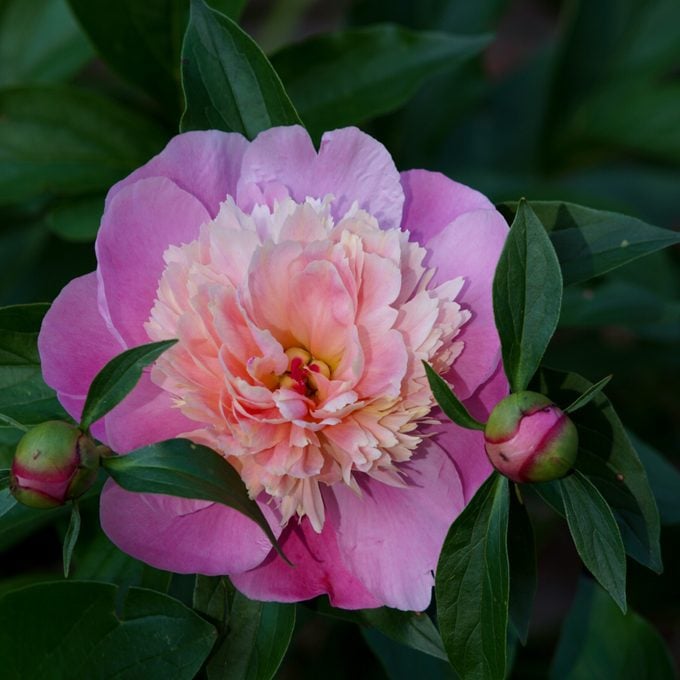
Peony
Paeonia lactiflora, Zones 3 to 8
You’ll eat up the showy, fragrant blooms of this classic beauty, but deer and rabbits won’t. With tons of varieties and an array of flower forms and colors, peonies offer a lot to love. “It’s an old-fashioned, fabulous flower that gives more than it takes,” says Kathleen Gagan, owner of Peony’s Envy nursery in Bernardsville, New Jersey.
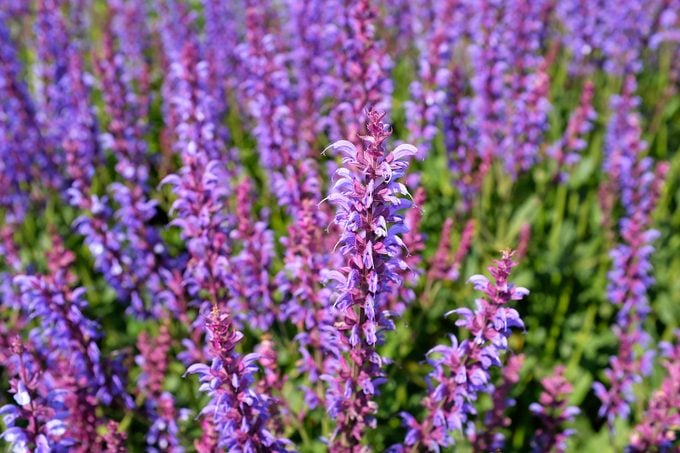
Wood Sage
Salvia x sylvestris, Zones 4 to 8
Sometimes called meadow sage, this perennial salvia has spikes of vibrant violet-blue flowers. Not only is it a deer resistant plant, but it’s also drought tolerant once established, is at home in the dry soils of rock gardens and is loved by hummingbirds.
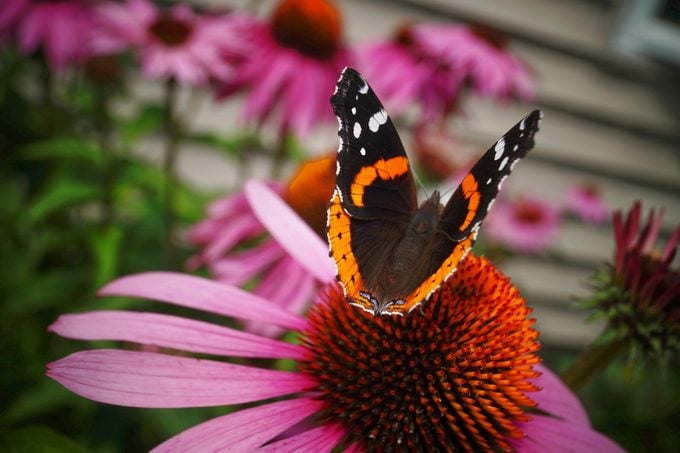
Coneflower
Echinacea species, Zones 3 to 9
Daisy-like petals burst from this low-maintenance perennial that comes in a range of colors. Plant pretty disease and deer resistant coneflower in a sunny spot with well-draining soil.
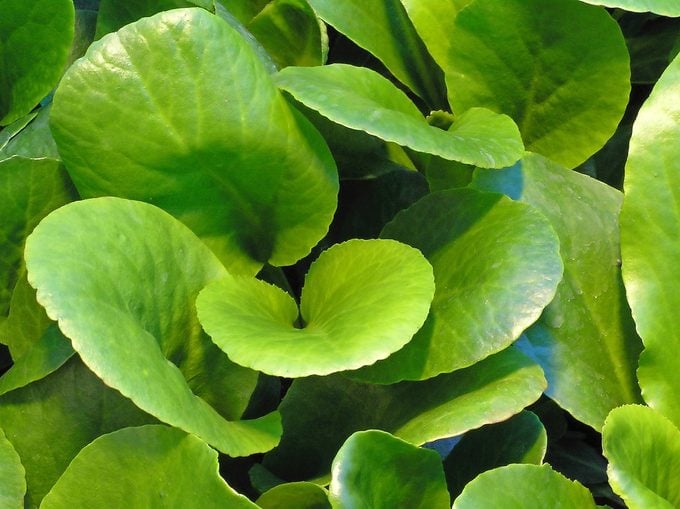
Bergenia
Bergenia crassifolia, Zones 3 to 8
Its nickname, pigsqueak, might be animal-inspired (its leaves squeak when rubbed), but most deer and rabbits say “no, thank you.” In spring, stems of pink flowers rise above large, glossy leaves. Often used as a shady ground cover, it thrives in dry soil and drought.
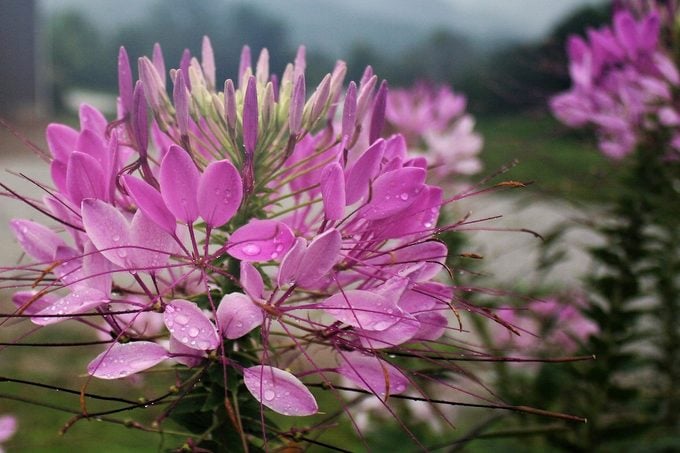
Cleome
Cleome Hassleriana, Annual
Because of its spiderlike flowers, cleome—which is also commonly called spiderflower—is a nearly unmistakable annual in a sunny garden. It grows quickly from seed, towering up to 4 or 5 feet, and offers fragrant pink, lavender, purple or white bicolor flowers. A pollinator favorite, it handles drought, and animals leave the hairy, sticky stems alone.
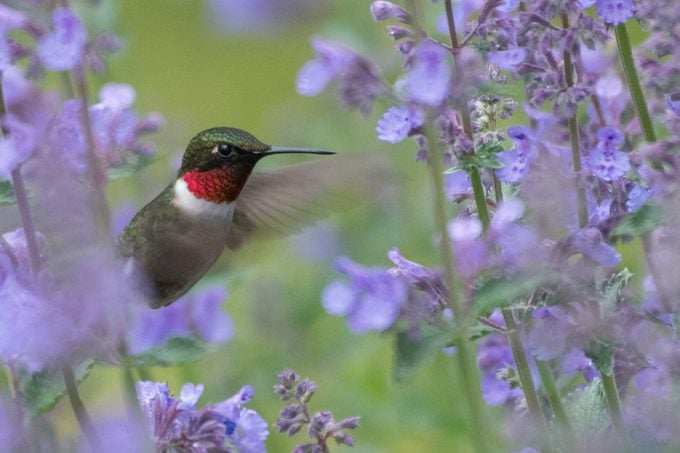
Catmint
Nepeta species, Zones 3 to 9
Catmints are easy to grow, long-blooming, heat-tolerant and deer resistant plants. After the flowers fade, shear off the spent blooms and about a third of the stalk for a second round. Check out more purple flowering plants to grow in your garden.
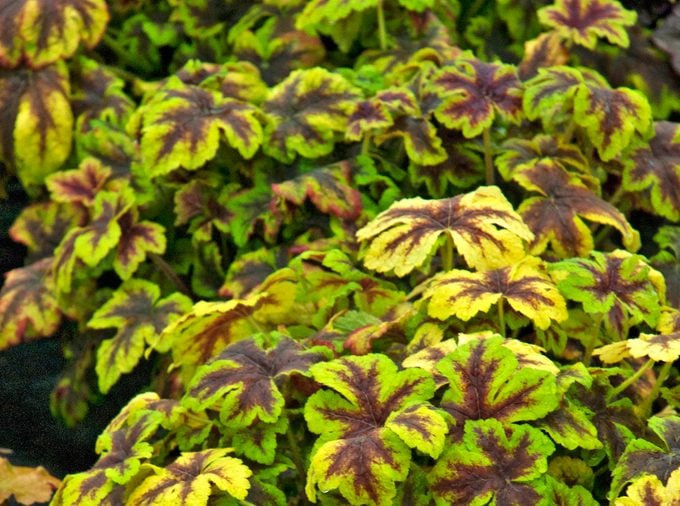
Gold Zebra Foamy Bells
Heucherella, Zones 4 to 9
Gold Zebra’s yellow and green leaves are accented with brilliant gold and blood-red centers. This deer resistant plant has showy white flowers that attract bees, butterflies, hummingbirds and other helpful pollinators.
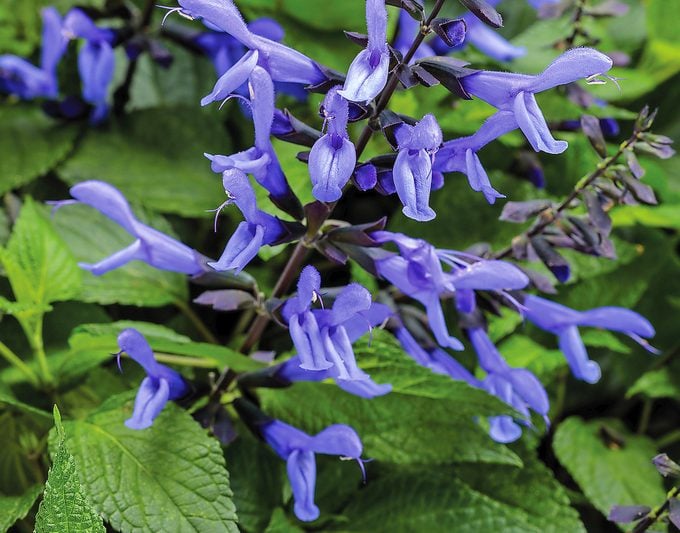
Rockin’ Blue Suede Shoes Salvia
Salvia Hybrid ‘BBSAL01301’, Annual OR Zones 9 to 11
It’s both airy, with spikes of blue-purple blooms, yet substantial at 40 inches tall and 30 inches wide. The flower color is delightfully closer to blue than purple. Hummingbirds, butterflies and pollinators can’t get enough of this deer resistant plant.
Jack of Diamonds Heartleaf Brunnera
Brunnera Macrophylla ‘Jack of Diamonds’, Zones 3 to 8
If you adored Jack Frost brunnera for its green and silver heart-shaped leaves, you’ll flip for the larger 9- to 10-inch wide foliage of this shade perennial. Deer give it a wide berth. Bees find an early nectar source in the tiny blue spring flowers.
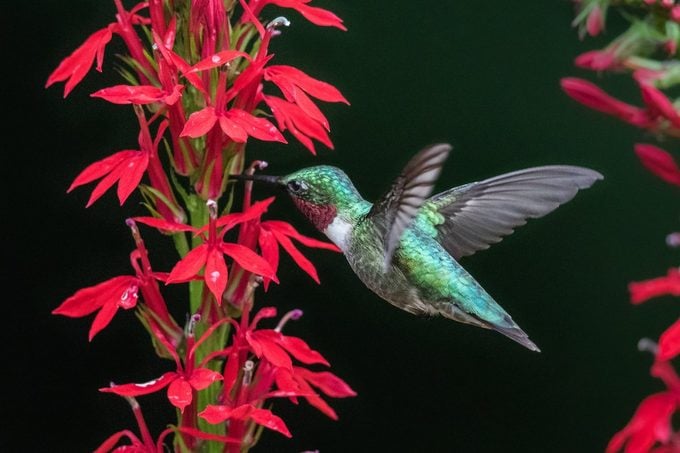
Cardinal Flower
Lobelia cardinalis, Zones 3 to 9
Eye-catching stalks of vibrant scarlet, white or red flowers pop in any summer garden from July to September. Cardinal flower blooms attract butterflies and hummingbirds, while rabbits and deer usually avoid the plant.
Arkansas Blue Star
Amsonia Hubrichtii, Zones 4 to 9
Prepare to be enchanted by this low-maintenance, native perennial. In fall, its feathery green foliage becomes blazing gold-yellow. Deer avoid it, while butterflies and bees love its beautiful, sky blue blooms.
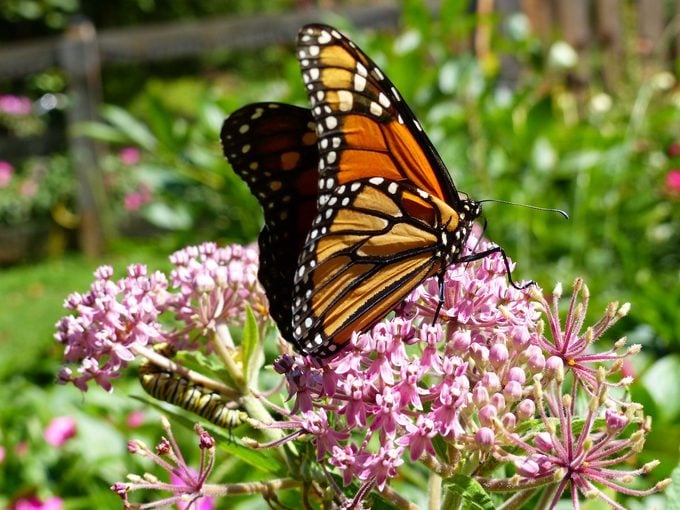
Swamp Milkweed
Asclepias Incarnata, Zones 3 to 6
Native to swamps and wet meadows, this butterfly and hummingbird magnet also tolerates dry soil. The 3- to 4-foot tall plants are topped with fragrant showy pink to mauve flowers in mid to late summer. You’ll find both monarch and queen butterfly caterpillars munching on the leaves, while deer tend to leave it be.
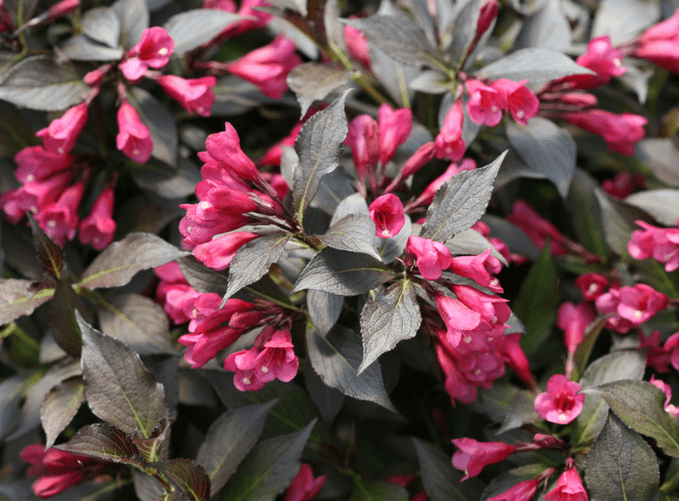
Weigela
Weigela florida, Zones 4 to 8
This large, dense flowering shrub produces bunches of blooms in spring. Traditionally, the pink flowers may reappear in summer, but new cultivars are available in many different shades and produce more blooms throughout summer and fall. Weigela tolerates clay soil, and deer generally avoid it.
Bugleweed
Ajuga reptans, Zones 3 to 10
Its strange name leaves a little to be desired, but bugleweed is truly a show-stopping perennial. It thrives in shade, acts as a ground cover, and has deep burgundy and purple leaves and spikes of pollen-rich purple flowers. Plus these are typically deer resistant plants.
Next, learn how to create the ultimate backyard wildlife habitat.





















